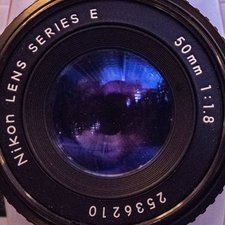Seagate FireCuda SSHD vs Standard SSHD
I am looking at the new Seagate FireCuda SSHD hard drives as a new standard to Mac Laptop and newer iMac hard drive replacement vs the standard which I have been using for a few years:
ST 100LM014 1 TB Internal 5400 RPM Laptop 2.5" SSHD Solid State Hybrid Drive
I have not found if it is backward compatible to SATA II or not.
I was wondering if anyone had experience with this in Macs?
http://www.seagate.com/internal-hard-dri...
UPDATE 4/19/17
Has anyone tried these new drives I see ifixit is selling? They are very reasonably priced.
Toshiba OCZ SSD
crwdns2937315:0IF107-135crwdne2937315:0
crwdns2937315:0IF107-136crwdne2937315:0
crwdns2934109:0crwdne2934109:0


 3.7crwdns2936485:0crwdne2936485:0
3.7crwdns2936485:0crwdne2936485:0  1.1crwdns2936485:0crwdne2936485:0
1.1crwdns2936485:0crwdne2936485:0  2.6crwdns2936485:0crwdne2936485:0
2.6crwdns2936485:0crwdne2936485:0 



crwdns2944067:010crwdne2944067:0
Maybe I'll get one and try it out on my SATA I laptop. But before I do, I would like to know everyones favorite SSHD, preferably with 32 GB flash.
crwdns2934271:0crwdnd2934271:0 George A. crwdne2934271:0
@pccheese - Read Dan's comment about this being a fixed SATA III. I've already been shipped two. So I'll test it on SATA I & SATA II and post my results. Meanwhile, if you decide to get a drive, go with the one that we know will work. Seagate ST1000LX001 and has the 32GB NAND.
crwdns2934271:0crwdnd2934271:0 mayer crwdne2934271:0
I'm quite confident that it will work with SATA I and II, unless it doesn't follow the SATA III specifications. It should follow VESA's standard. Post the results for performance once you get them. Oh, and don't forget the firecudas are 7200 rpm vs. 5400 rpm.
crwdns2934271:0crwdnd2934271:0 George A. crwdne2934271:0
mine running fine...as secondary hard drive...i did fusion drive...1tb ssd + 2tb firecuda sshd..
crwdns2934271:0crwdnd2934271:0 khaidir77 crwdne2934271:0
@mayer what's the results?
crwdns2934271:0crwdnd2934271:0 George A. crwdne2934271:0
crwdns2934275:05crwdne2934275:0